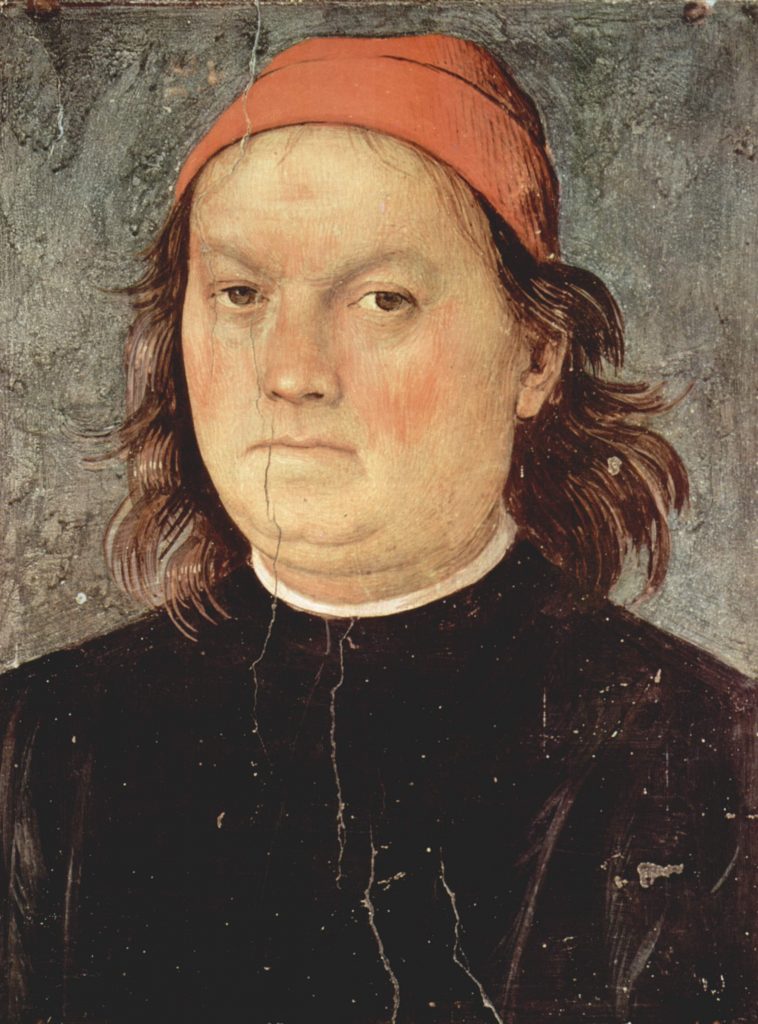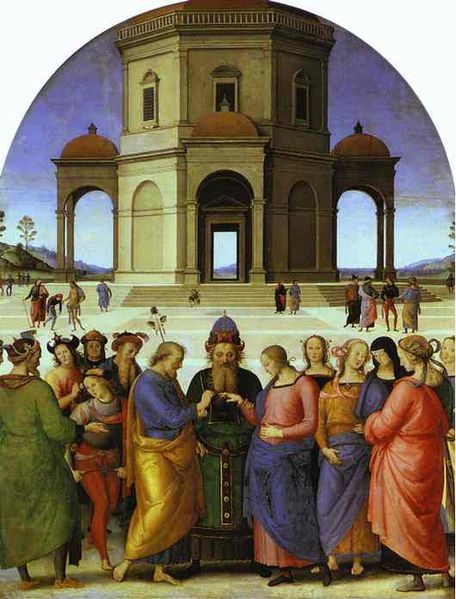
Pietro Perugino 1446-1523 (Umbria)
Pietro Vannucci, nicknamed Perugino from Perugia, the chief city of Umbria of which he was born (Città della Pieve Umbria, Italy), was a divine Italian Renaissance painter of the Umbria school. His artistic skill held equal to that of Leonardo da Vinci but unfortunately did not receive the same level of recognition.
Perugino was one of the earliest Italian oil painters and was apprenticed (at the early age of nine) to the local artistic workshops of Perugia. He later apprenticed to the workshop of Andrea del Verrocchio alongside his contemporary da Vinci.
The most well-known pupil he taught and influenced was Raphael who’s early works of calm beauty owe much to Perugino.

The Marriage of the Virgin by Perugino 
The Marriage of the Virgin by Raphael
Perugino was regarded as one of the leading painters in Florence in the 1480s and as the “best master in Italy” in 1500, but soon afterward his reputation suffered. He had been criticized by artists in Florence for his repetition and mannerisms of figures and at times whole figures in his work. Even Michelangelo had called him a lousy artist. But Peruginos response was as serene as his paintings.
“The figures you find so bad now you used to praise. What can I do about it?”
-Perugino
In 1481 he was summoned to Rome where, along with others, he worked on the frescos for the walls of the Sistine Chapel.
The Delivery of the Keys or Christ Giving the Keys to St. Peter is a fresco by executed in 1481–1482 and located in the Sistine Chapel, Rome.
Perugino tragically died of the plague in 1523. He produced a considerable body of work in his lifetime and influenced many of his contemporaries and pupils.
Calm serene and graceful are the works of Pietro Perugino and seen in his array of beautiful figures and delicate landscapes.

In this scene of tranquillity, one can notice the beautiful landscapes that extend out, repetition of curving forms, and figures that meditate on the death of Christ.

He painted respectful altarpieces in a sweet and devout manner and knew how to achieve a sense of depth without. upsetting the balance of the design.
The Virgin appearing to St. Bernard, c. 1490-4
Altar-painting, oil on wood, 173x 170cm.
Dedicated to St. Bernard, he looks up from his book to see the Holy Virgin standing in front of him. The almost symmetrical lay-out the figures form together a harmonious composition wonderful balance.
One reply on “High Renaissance & Mannerism”
Joanne,
Excellent work on Perugino! Solid research sprinkled with interesting anecdotes and personal thoughts. That is just what I’m looking for in these blogs. Keep up the good work and I look forward to more of the same moving forward.
Jeff